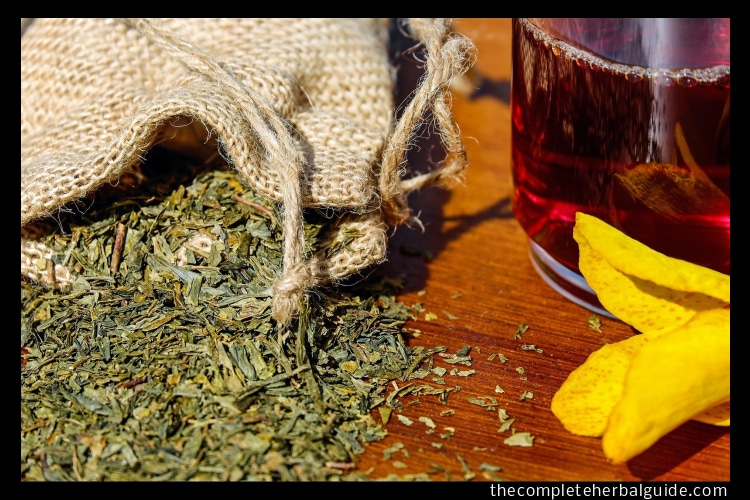
Natural Remedies for Joint Pain
In this article, you’ll learn and discover natural remedies for joint pain.
Dab some birch, ginger, chamomile or nutmeg essential oil along with a carrier oil onto your sore joints. Try herbal remedies like willow bark extract, seed oils of evening primrose, borage, black currant seed, devil’s claw, cat’s claw, nettles, to counter joint inflammation. Apply a cold-warm compress and massage the affected part with medicated oils to relieve the achy joints.
Even if you’re the kind of person who really takes care of their health (and god knows, many of us don’t!), you probably don’t pay much attention to your joints. But the complex machinery of our body depends on these tiny cogs to move, bend, and turn. We wouldn’t be able to do a million things needed to get through each day without healthy joints.
Joint pain is a common enough problem but it can turn simple everyday tasks into a challenge and even disrupt your normal life. Your knees, which are your largest joint and take the weight of your entire body, are especially vulnerable. Joint pain can be a result of infections (bone or joint); overexertion strain, or injuries; and, often, arthritis – be it osteoarthritis (where the cartilage in the joints wears away, causing bones to rub together), rheumatoid arthritis (where the immune system attacks tissues of the joints, causing pain and swelling), or gout (where uric acid crystals build up in the joints).
It’s important to investigate and address the underlying cause of your pain. While this may mean seeing a doctor, there are many natural solutions you can try instead of medication to manage the pain.
Do keep in mind, though, that you should seek medical help if your pain is severe, lasts for more than 3 days, or is accompanied by other symptoms, weight loss, or fever.
Table of Contents
Try These Natural Remedies For Joint Pain
1. Dab On Some Essential Oil
Many essential oils like birch, ginger, chamomile, cloves, and nutmeg are great at relieving pain. Dilute a couple of drops in a carrier oil like grapeseed or almond oil and apply to the affected joint. You can also use a combination of these oils for pain relief. Don’t apply essential oils on broken skin, though. And remember, some essential oils like clove oil are extremely potent and can irritate your skin, so follow instructions given on the package on how they are to be used.
2. Exercise To Banish Joint Pain
While you do need to rest an inflamed or painful joint, don’t take it too far. Lack of sufficient exercise can also lead to pain and stiffness in the joints. By exercising your joints, you can help nourish joints, make your muscles stronger, and improve flexibility, balance, and circulation.
Some kinds of exercise are especially beneficial if your pain is triggered by arthritis. Swimming, walking, low impact aerobics, strength training, tai chi, yoga, or even dancing can all help with mobility, strength, and cardiovascular fitness. Warm water exercises (hydrotherapy) are especially useful as the water supports your body and provides resistance that builds endurance and muscle strength. A hydrotherapist or physiotherapist can help you develop a suitable exercise routine. Do remember to check in with your doctor before starting any new exercise program.
3. Try Acupuncture
Acupuncture can make a useful addition to regular medical care for people with osteoarthritis. Acupuncture is based on the traditional Chinese theory that a life force (Qi) flows through our body along pathways known as meridians and that blockages in the flow of this energy cause disease. Stimulating specific points (acupuncture points) on the body by inserting fine needles is thought to remove these blockages. Research has found that acupuncture (for 5 acupuncture points) over the course of 26 weeks improved function and brought pain relief for those with osteoarthritis of the knee.
4. Give Herbal Remedies A Shot
Nature has a treasure trove of remedies that can ease joint pain.
Devil’s Claw
Devil’s Claw, a tuber vegetable native to Africa, can be used to treat arthritis and the resulting joint pain. It contains the iridoid glycoside harpagoside which can help improve stiffness, pain and physical function. A study found that over the course of 4 months, it was at least as effective as diacerhein, a drug that is used for osteoarthritis.
Seed Oils
Seed Oils of evening primrose, borage seed, and black currant seed can help reduce pain. These contain gamma-linolenic acid (GLA), an unsaturated fatty acid that has been found effective in decreasing joint inflammation in patients with rheumatoid arthritis. Studies show that taking GLA supplements for 6 months reduces the number of swollen joints, the duration of morning stiffness, and pain.
Cat’s Claw
Cat’s Claw has been traditionally used for treating chronic inflammation. It has antioxidant properties and inhibits a protein associated with inflammation. A study found that patients with osteoarthritis of the knee who took a capsule containing a cat’s claw extract daily experienced a reduction in pain within a week.
Willow Bark
Willow Bark has pain-relieving properties which were known even to the ancient Greeks, Egyptians, and Indians. A study that looked at its effect on people with osteoarthritis found that pain reduced by 14% after 2 weeks of treatment with willow bark extracts, while it increased by 2% for people given a placebo.
Stinging Nettles
Stinging Nettles have been used to reduce pain from rheumatism traditionally in Europe, with people stinging themselves (the nettles cause mild irritation or pain) with them around affected joints. It is thought to work because of the serotonin and histamine in the nettles, neurotransmitters involved in the sensation of pain.11 A study found that patients with osteoarthritis pain at the base of the thumb or index finger experienced relief from pain and disability after a week’s treatment with nettle sting.
5. Turn To Ayurveda
The ancient medical system of Ayurveda offers remedies that can be helpful to those with joint pain.
- The juice of Guduchi (an ounce twice daily) with 10 gm of dry ginger powder is considered beneficial.
- Guggulu, a gum resin from the Cumifora Mukul tree which has anti-inflammatory and anti-arthritic properties, is used in medicinal formulations like Yogaraja to treat joint pain.
- According to Ayurveda, when food is not properly digested it becomes a toxic substance known as ama which can cause pain and swelling in the joints. Diet, therefore, plays an important part in the treatment of joint pain. Ayurveda recommends a diet of light gruel or fasting while you are suffering from joint pain. Pulses (with the exception of a green gram) and sour things like curd should be avoided, and so should cold or fried things. Do take care to consult with a nutritionist before restricting a large number of foods or whole food groups from your diet for long periods.
- For arthritis-related pain, applying a cold pack for a minute, preceded and followed by warm water soak for three minutes, is said to give relief. Massaging the affected part with medicated oils like sahacharadi or mahanarayana taila is also beneficial.









